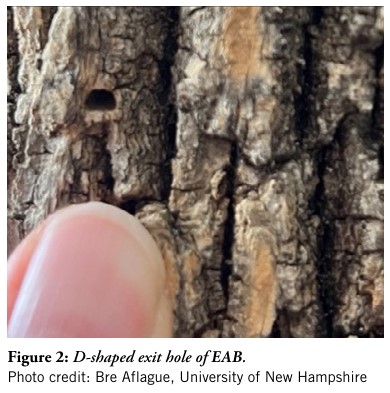Memorial Day weekend is coming up and If you’re anything like me, you’re excited to get out of town and go camping this weekend and throughout the summer. And no camping trip is complete without a campfire to gather around.
But there is one rule you should follow when making campfires that can be extremely important in controlling the spread of invasive species: don’t move firewood- buy it where you burn it!
You should always avoid moving firewood out of the county where you acquired it. So, when you visit a campground, leave your firewood at home. Purchase firewood at or near the campsite and be sure to burn it all before you leave. You don’t want to bring any leftover firewood home with you either.
Firewood movement is one major way invasive species of insects and diseases are introduced to new ecosystems. These pests can infect or burrow into trees that are processed into firewood and even survive in the wood for years. Especially because firewood is often cut from weak or storm-damaged trees that are more susceptible to infection by insects and disease. Once firewood is processed and stacked, it becomes a protected habitat for pests to hide. While most invasive insects can only travel short distances, they can be moved hundreds of miles by unsuspecting humans toting firewood.
Just because your firewood looks clean, and you don’t see any eggs, holes, or other signs of infection, does not mean it is safe to use! There are microscopic fungal spores and pin-sized insect eggs that are easily missed in a visual inspection- never assume that the wood is free from invasive species.
The emerald ash borer or EAB is one of the invasive insects we are trying to prevent the spread of. This insect is a metallic green wood boring beetle about ½ an inch long. Emerald ash borers are native to Asia and were first introduced to the United States in 2002 in Michigan. Unlike ash trees in Asia that have developed resistance to EAB, Ash trees in North America are very susceptible to EAB and often die a few years after infestation. This has led to the death of hundreds of millions of ash trees with aesthetic, financial, and ecological impacts.

EAB lay their eggs on the bark of trees. Once they hatch, the larvae bore into the trees where they feed on the inner bark throughout the summer, creating s-shaped galleries. This causes girdling of the tree which inhibits nutrient and water transport within the tree, ultimately killing the tree. After overwintering within the tree, adult EAB emerges from the bark leaving D-shaped exit holes about 1/8 of an inch wide. This exit hole is a sign of EAB infestation, but again, can be easily missed in firewood.

Other invasive species that can travel in firewood include spongy moth, Asian longhorned beetle, and laurel wilt disease, all of which can have devastating impacts on Georgia’s ecology.
While many people are actively working to stop the spread of invasive species, it is our collective responsibility to avoid introducing pests to new environments. I certainly strive to interact with the natural spaces I visit in a way that preserves them for future visitors to enjoy. Being conscientious about firewood sourcing and use is one small way we can all help protect our precious ecosystems.
For more information, continue reading here:
Leave a Reply